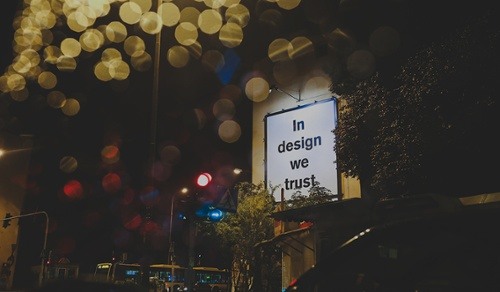Generating successful solutions with Design Thinking
Design Thinking is a concept that, as time goes by, is becoming more and more popular and necessary in business. It is a methodology, as well as a...
By Role
By Industry
By Target Customer
What We Offer
We drive business growth by improving operational efficiency through process optimization, smart automation, and cost control. Our approach boosts productivity, reduces expenses, and increases profitability with scalable, sustainable solutions
Customer Experience
We design memorable, customer-centered experiences that drive loyalty, enhance support, and optimize every stage of the journey. From maturity frameworks and experience maps to loyalty programs, service design, and feedback analysis, we help brands deeply connect with users and grow sustainably.
Marketing & Sales
We drive marketing and sales strategies that combine technology, creativity, and analytics to accelerate growth. From value proposition design and AI-driven automation to inbound, ABM, and sales enablement strategies, we help businesses attract, convert, and retain customers effectively and profitably.
Pricing & Revenue
We optimize pricing and revenue through data-driven strategies and integrated planning. From profitability modeling and margin analysis to demand management and sales forecasting, we help maximize financial performance and business competitiveness.
Digital Transformation
We accelerate digital transformation by aligning strategy, processes and technology. From operating model definition and intelligent automation to CRM implementation, artificial intelligence and digital channels, we help organizations adapt, scale and lead in changing and competitive environments.
Operational Efficiency
We enhance operational efficiency through process optimization, intelligent automation, and cost control. From cost reduction strategies and process redesign to RPA and value analysis, we help businesses boost productivity, agility, and sustainable profitability.
Customer Experience
Marketing & Sales
Pricing & Revenue
Digital Transformation
Operational Efficiency
Design is an important element for all companies. It is related to aesthetic as well as technical and strategic aspects, since it does not remain only in the product or service, but can be incorporated in all types of processes (management, operations, strategy, support, evaluation, among others). Thanks to the latter, Design Thinking has become more than a methodology, it is a philosophy that allows identifying root causes of complex problems and generating successful creative and innovative solutions.
Blog that might interest you: Introduction to Design Thinking
For this, design thinking has a structure that can be modified as needed, as there are different frameworks of the concept suitable for different situations. Despite this, all frameworks retain the same essence, it is necessary to have a deep understanding of the people involved, then question assumptions and processes, then identify opportunities for improvement and define problems, and finally generate solutions. It should be noted that this methodology uses a combination of science and art to generate spaces for thinking "outside the box", which gives that component of creative innovation that traditional methods lack.
In this blog I am going to talk about how design is affected by the work team, what is its usefulness for a business and we are also going to see some tips to apply it effectively.
Ways of thinking in Design Thinking
Design thinking is a problem-solving tool that uses as its basis the focus on the human being, thanks to which it defines it as the axis of the whole process. In spite of this, I quote Goethe's phrase that says "A man sees in the world what he carries in his heart". A politician, a doctor, an engineer, an artist and a child see the conflicts of their country from a very different perspective each, just as many times a marketing manager, a general manager, a sales manager and a financial manager may see the strategic needs of the company from their own area.
However, rather than seeing this as a problem, we can see it as a great opportunity. On the one hand, design thinking requires multidisciplinary groups seeking to take advantage of the experiences and perspectives of the people who make up different areas of knowledge; on the other hand, we all have different creative processes that if combined can be worth more than the sum of individual contributions.

There are people whose training tends towards the scientific side, they have a profile of "discoverers", as Charles Owen (2007) calls them. They look for explanations to the phenomena that occur, they try to make us understand what surrounds us and that is why they are responsible for a large part of the progress of companies. However, they are systematic, they look for every possible combination of factors that can affect a business system, based on this they formulate different hypotheses and follow a scientific method to test them. This process can be useful, but inefficient as it consumes a lot of time and human resources.
There are also "doers", who seek to be creative and innovate by sintering ideas and building preliminary solutions. People who work in this way first present different minimum viable products and then they are taken to the test, where it is confirmed whether they are potential solutions or not.
Design thinking seeks to unite the rational part of scientists with the intuitive part of designers to understand user needs, use experience, identify parameters and working conditions, but also evolve and reinterpret ideas, visualize the problem, produce prototypes, adapt and falsify them to arrive at the best available option. It is thanks to the combination of these two disciplines that a project does not remain only in the schematization of the problem, nor are solutions generated at random until one of them matches. On the contrary, it learns to delimit, to plan and forces to take action on the fly, which serves as a guide and drives the project forward.
We recommend you read: Design Thinking Tools
What is it for?
Having mentioned a little about how multidisciplinary work teams can collaborate to generate solutions, it is also important to consider that, being a human-centered improvement philosophy, its field of application can touch all aspects of a company.
Some of the reasons why you should consider using it are:

Tips for application
As a major tip, do some research on the different design thinking frameworks, find out which one best suits your need and take it as a guide for your project. There are phases that may not be mentioned, however, the essence of the structure of this methodology is preserved and is based on five stages: Empathize, Define, Ideate, Prototype and Test.

In this blog we talked about a very important aspect of design thinking, the work of multidisciplinary teams. Thanks to advances in each discipline, people develop different faculties throughout their personal and professional lives, everyone is a discoverer and a doer, a scientist and a designer. All people can contribute to their organization, beyond their roles, in a wide range of options. Design thinking is focused on users, whether they are internal or external customers, so I recommend you follow the tips to design the solution to one problem at a time and ensure the continuity and success of your business.

Design Thinking is a concept that, as time goes by, is becoming more and more popular and necessary in business. It is a methodology, as well as a...

It is easy to say that thinking outside the box allows us to solve complex problems innovatively, but putting it into practice can be a big challenge...

Do you know what the world's largest media and entertainment conglomerate, aka Disney, digital accommodation platform Airbnb, management systems...